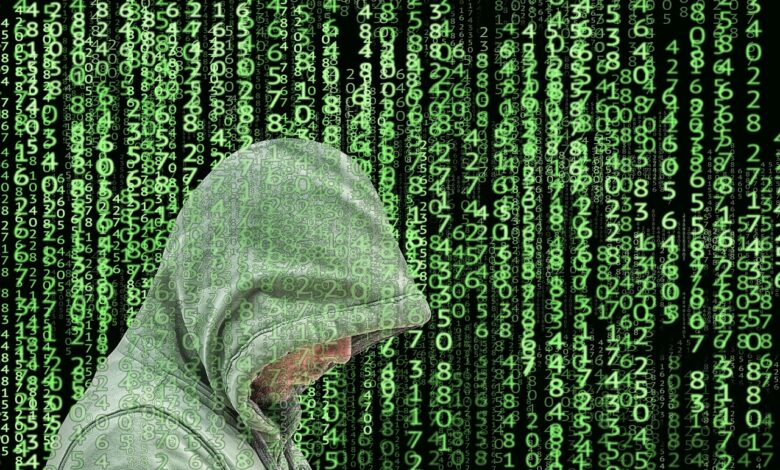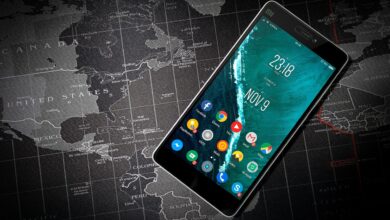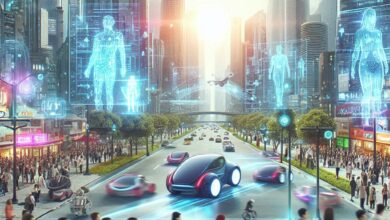Cyber-Security in the Era of AI

Cybersecurity in the era of AI is a multifaceted and rapidly evolving field. The integration of artificial intelligence (AI) into cybersecurity presents both opportunities and challenges. Here are key aspects to consider:
Opportunities
- Enhanced Threat Detection:
- Machine Learning (ML) Algorithms: AI can analyze vast amounts of data to identify patterns and anomalies indicative of cyber threats. ML algorithms can adapt and learn from new data, improving their accuracy over time.
- Real-time Monitoring: AI systems can provide real-time threat detection and response, reducing the window of time attackers have to exploit vulnerabilities.
- Automated Response:
- Incident Response: AI can automate the response to common security incidents, such as isolating affected systems, applying patches, or restoring data from backups. This reduces the response time and frees up human analysts for more complex tasks.
- Threat Mitigation: AI can predict potential attack vectors and proactively apply measures to mitigate these threats before they can cause harm.
- Predictive Analytics:
- Risk Assessment: AI can predict potential vulnerabilities and security risks by analyzing historical data and current trends, allowing organizations to take preventive measures.
- Threat Intelligence: AI-driven tools can gather and analyze threat intelligence from various sources, providing insights into emerging threats and helping organizations stay ahead of cybercriminals.
- Improved User Authentication:
- Behavioral Biometrics: AI can enhance authentication processes through the analysis of user behavior patterns, making it harder for attackers to impersonate legitimate users.
- Adaptive Authentication: AI systems can adjust the authentication process based on the perceived risk level, requiring additional verification for high-risk activities.
Challenges
- Adversarial Attacks on AI:
- Manipulation of Training Data: Cybercriminals can manipulate the data used to train AI models, causing them to make incorrect predictions or miss threats.
- Evasion Techniques: Attackers can develop techniques to evade detection by AI systems, such as creating malware that adapts its behavior to avoid being flagged.
- AI-powered Cyber Attacks:
- Automated Attacks: Cybercriminals can use AI to automate and enhance their attacks, making them more efficient and harder to detect.
- Deepfakes and Social Engineering: AI can be used to create realistic deepfakes and other social engineering tools, which can be employed to deceive and manipulate individuals or organizations.
- Privacy Concerns:
- Data Collection: The extensive data collection required for AI can raise privacy concerns, especially if sensitive information is not adequately protected.
- Surveillance: AI-driven surveillance systems can be misused for unauthorized monitoring of individuals, leading to potential abuses of power and violations of privacy.
- Complexity and Resource Requirements:
- Implementation and Maintenance: Deploying and maintaining AI-driven cybersecurity solutions can be complex and resource-intensive, requiring specialized knowledge and significant investment.
- False Positives/Negatives: AI systems can produce false positives (flagging legitimate activity as malicious) or false negatives (missing actual threats), which can undermine their effectiveness.
Future Directions
- AI and Human Collaboration:
- Combining the strengths of AI and human analysts can create a more robust cybersecurity posture. AI can handle routine tasks and data analysis, while humans can focus on strategic decision-making and complex threat analysis.
- Regulation and Standards:
- Developing regulations and standards for the use of AI in cybersecurity can help ensure that these technologies are used responsibly and ethically, balancing security needs with privacy concerns.
- Continuous Learning and Adaptation:
- AI systems need to continuously learn and adapt to new threats. This requires ongoing updates and improvements to algorithms and models, as well as a feedback loop from human analysts to refine AI capabilities.
Here are some real-world examples of how AI is being used in the field of cybersecurity:
- Threat Detection and Analysis:
- Darktrace, an AI-powered cybersecurity platform, detects and responds to threats in real-time by identifying patterns and anomalies that indicate potential cyber-attacks.
- Automated Incident Response:
- After a cyber attack, automated incident response tools clean up and mitigate the impact. These tools leverage AI to streamline the process and reduce manual effort.
- Vulnerability Scanning and Patch Management:
- AI-driven vulnerability scanners identify weaknesses in systems and applications, allowing organizations to patch vulnerabilities promptly.
- Threat Hunting:
- AI algorithms proactively search for signs of malicious activity within an organization’s network, helping security teams stay ahead of potential threats.
- Malware Analysis and Reverse Engineering:
- AI assists in analyzing malware behavior, understanding its techniques, and developing effective countermeasures.
- Penetration Testing and Ethical Hacking:
- AI tools simulate attacks to identify vulnerabilities in systems, helping organizations strengthen their defenses.
- Risk Assessment:
- AI models predict potential vulnerabilities and security risks by analyzing historical data and current trends.
- Data Loss Prevention:
- AI monitors data flows and identifies suspicious patterns to prevent unauthorized data exfiltration.
These examples demonstrate how AI is both a powerful ally and a potential risk in the ever-evolving landscape of cybersecurity. Organizations must strike a balance between leveraging AI’s capabilities and mitigating its risks to protect their digital assets effectively.
In summary, AI has the potential to significantly enhance cybersecurity, offering advanced tools for threat detection, response, and prevention. However, it also introduces new challenges and risks that must be carefully managed. The future of cybersecurity in the era of AI will likely involve a collaborative approach, combining human expertise with advanced AI technologies to stay ahead of evolving threats.




